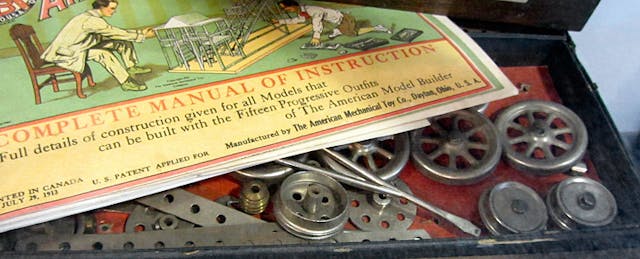The old Metropolitan Exchange factory in downtown Brooklyn is not your typical site for a four-day, full-time professional development session, let alone a 14-day learning challenge for 18-24 year olds. Picture working amidst a torn-up, life-sized stuffed Santa in one of many old swirly chairs, surrounding a big gardening trough and an old biker sign with Diner-esque lights.
But sometimes, putting teachers and students out of their comfort zones can encourage them to interact and design solutions with one another.
On June 20th, seven eager teachers with a combined 100 years of classroom experience gathered for the start of a four-day “ride along” professional development session. The “ride along” approach is a part-observational, part-experiential learning experience where teachers watched students tackle real-world challenges (through tinkering with objects) and simultaneously redesigned school and classroom models using many of the same processes that the students employed.
This was part of a series of experiments for Project Breaker. Designed by TED Senior Fellow Juliette LaMontagne, in partnership this summer with Susie Wise and the Stanford design school’s K-12 Lab,Project Breaker teaches 18-24 year olds creative problem-solving design processes and the entrepreneurial skills necessary to tackle real-world challenges and transform ideas into businesses.
The teachers took part in this summer’s Project Breaker challenge, “The Future of Stuff,” alongside students as a way to explore new patterns of collaboration, tinkering, and creative teaching. They began by surveying the factory, replete with carefully scattered objects that included a towering tree of old wood parts and a tabletop-sized Coca-Cola sign, for “stuff” that they could re-purpose and re-use. One teacher repurposed a knife holder to be a poem giver and invited others to put in poems that they later shared. Small, emergent surprises like this sparked motivation and curiosity and provided sources of inspiration for the main task ahead: transforming our educational environments.
These design-thinking exercises helped teachers explore innovative approaches to redesigning the idea of school--the physical space, curricular structure, and bell schedule. One major theme that emerged was the rich potential of “liminal spaces” in education, which are the “in-between” times that range from short transitions between classes to the months between the end of HS and beginning of college.
It is in this space where many of us learned more valuable lessons from taking a menial, rote-skill job, landing for the first time on another continent, or having an unlikely exchange that sparked an idea, than we did in traditional classroom time. How might we grow these informal, immersion experiences while keeping them as accessible as possible, rooted in real challenge, in real communities, and constructed for real-time learning?
At the conclusion of the four-day session, teachers walked away in pursuit of new ideas and projects to make this happen. Three are proposing an intensive design thinking courses to help high school seniors tackle research projects, along with classes for their peer educators at other schools. Others are reaching out to libraries, autoshops, and even representatives from makerbot.org to host community Makerspaces and design thinking sessions. One literature teacher is incorporating design thinking process as a way to investigate texts and write essays. Another is coming up with ways to assess for cognitive and noncognitive skills used in project and process-based learning environments like Project Breaker.
As Project Breaker showed, tapping into resources across the many wonderful organizations building out design thinking and learning experiences and those who create learning spaces in the community can be a first step in seeding empathetic community-driven innovation in and outside of schools. By connecting with one another and students in the unlikeliest of settings, educators designed new learning opportunities in school, out of school, and in the liminal spaces in between.


